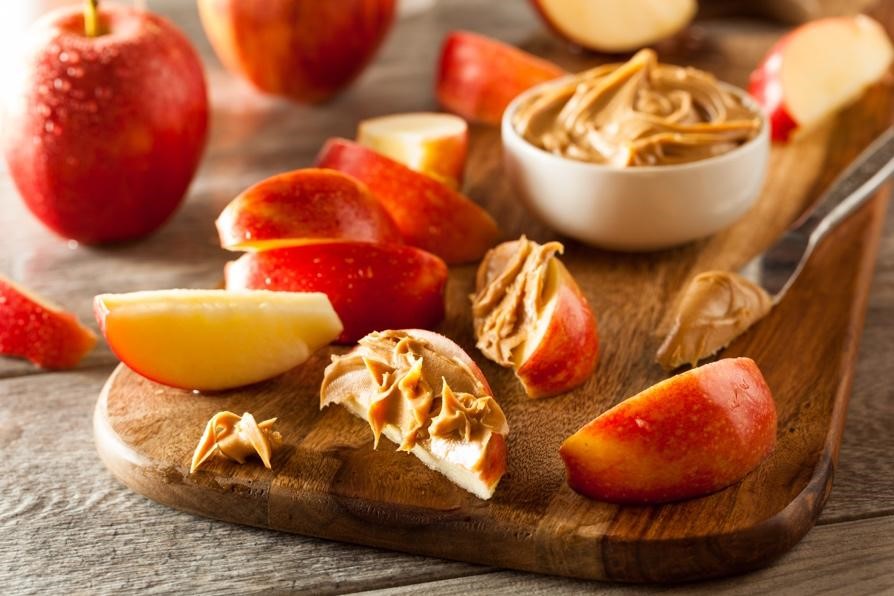
1. Eat Breakfast

Breakfast truly is the most important meal of the day. Studies show that breakfast skippers on average consume more calories than breakfast eaters. Skipping breakfast leads to decreased productivity, irritability and fatigue mid-afternoon. Breakfast eaters can burn more than 300 calories more than non-eaters.
Solutions to common excuses:
“I don’t have time.” – Here are some quick and easy breakfast ideas:
- Low sugar yogurt + cereal (such as KIND cereal) mix
- Banana and a glass of skim milk
- Smoothie – made with skim milk and frozen berries
- Whole wheat English muffin or toast topped with peanut butter or reduced fat cheese
“I’m not hungry in the morning”- Most likely the result of too many calories the night before.
“I’m on a diet”- You burn breakfast calories more easily with the same amount eaten at night. By skipping breakfast, you are more likely to get too hungry and overindulge at night.
Sample 300 Calorie Breakfasts
1/2 cup dry oatmeal
1 cup skim milk
Mini granny smith apple, chopped
Sprinkled with cinnamon
2 whole wheat waffles (Van’s, Kodiak Cake)
1/2 cup low sugar yogurt
1 cup strawberries
1 whole wheat toaster size bagel
1 Tbsp. almond butter
1 cup melon
“I don’t like breakfast foods” – Try nontraditional breakfast foods such as a veggie burger, peanut butter and jelly sandwich, cottage cheese and fruit.
“When I eat breakfast, I feel hungrier all day.” – If you are eating a very small breakfast it is just enough to get your metabolism revving, but it is not satisfying. Make sure your breakfast is carbohydrate rich, fiber rich, full of fruit and some protein.
2. Eating Higher Fiber Foods

A high fiber diet can reduce total cholesterol levels, increase GI transit time, and control weight. These benefits help to prevent heart disease, certain cancers, and constipation. Here are some ways that you can increase your fiber intake:
Try whole-wheat ore lentil pasta, brown rice, quinoa.
Substitute whole-wheat flour for white flour in baking.
- Do not peel fresh fruit.
- Choose whole, fresh food over processed foods.
- Choose cereals with 5 grams of fiber or more per serving.
- Read food labels. 20-35 grams of fiber are recommended daily.
3. Drink Water and Other Calorie-free Beverages.…..

Fluids have many important functions in the body such as producing energy, regulating body temperature, eliminating waste products and dissipating heat through the skin as sweat. Water also suppresses the appetite naturally and helps the body metabolize stored fat. An increase in water intake can actually reduce fat deposits. The average person should consume half of their body weight in ounces of water every day. Thirst is not a good indicator of hydration. Once you are thirsty you are already dehydrated. One easy way to monitor your fluid status is by checking the color of your urine. If you are adequately hydrated your urine should be lemonade color.
4. Eat Snacks….

Snacks help to keep you from getting too hungry between meals. When you are starving you tend to reach for the high calorie, high fat foods. It is better to eat 6 small meals, instead of 2 or 3 huge meals. Try to steer clear of snacks that are purely carbohydrates. These may satisfy your taste buds at the moment, but you will be hungry again in an hour or so. Add protein to your snack.
Such as:
- 1/2 cup 2% cottage cheese & 1 cup mixed fruit
- Apple with 1 Tbsp. peanut butter
- Crudite with 1/3 cup of hummus
- 2 Babybel Light cheese + 2 clementines
- 15 Nutthin crackers and 1 oz. of cheese
Here are a few snack pointers:
- Keep low calorie snacks handy such as raw, cut veggies or fruits.
- Liquids can fill an empty stomach quickly. Put your hunger to the water test. Drink 8 oz. of water 15 minutes before you reach for food.
- Foods high in fiber or water are great low calorie fillers. Air popped popcorn, fruit, raw veggies, or shredded wheat cereal
- Choose snacks that require preparation or take a long time to eat.
5. Avoid a High Sugar Diet.

Excess sugar is full of calories and low in nutrients.
- Do not restrict yourself to the point of causing a sugar binge. A moderate amount of sugar can be part of a healthy diet.
- Make sure that you really want the food and you are not eating for emotional reasons.
- Choose high sugar foods that are low in fat such as hard candy, frozen yogurt, sherbet, sorbet, fruit and popsicles.
- Eat high sugar foods with other foods. Eating sugar alone can cause a sugar high and then a sugar low. When you have a sugar low, you want more sugar!
- Avoid breakfast cereals that are high in sugar, greater than 5 g per serving.
- No one form of sugar is better than the other form – table sugar, corn syrup, honey, agave syrup and brown sugar were all created equal from a calorie and sugar perspective.
- Keep sweets out of the house. If it is not there, you will not eat it. Go out for them on special occasions.
- Do not use sugar as a reward for yourself or your children.
- You can use 1/3 less sugar in your recipes without affecting the end product.
- Read food labels to determine which products are higher in sugar.
Note from Roz: Coming next from nutritionist, Catherine Kruppa the next 5 steps to total 10 ways to step up your metabolism, something we all need to do after our two months of sedentary in our homes. To read more from her plus more great advice, check out her website, Advice for Eating

One thought on “5 Ways to Speed Up Your Metabolism Through Diet”